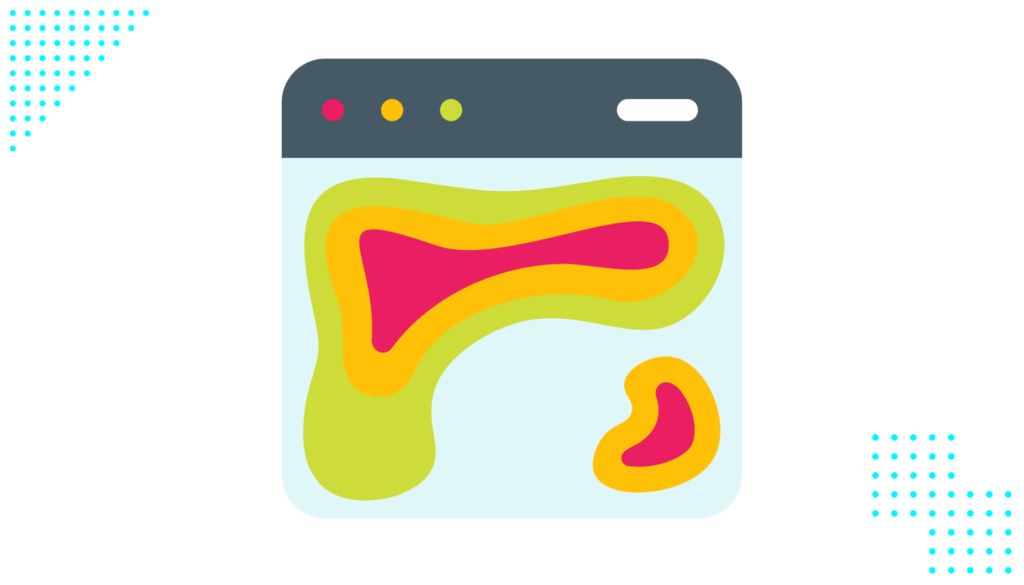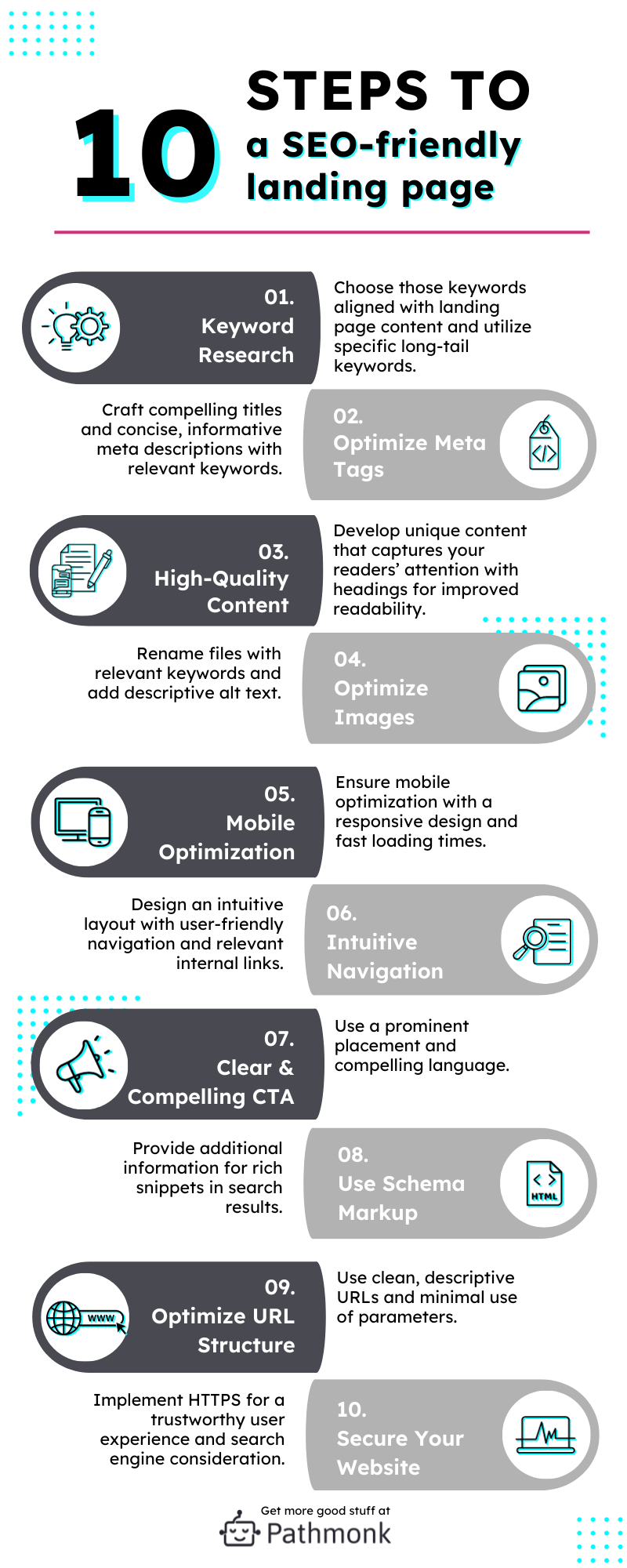
Crafting a high-converting landing page is no longer a matter of aesthetics or guesswork; it’s a science that blends strategic design, persuasive copywriting, and (maybe some) unconventional tactics. While basic elements like clear calls-to-action and compelling headlines remain essential, the art of converting visitors into customers lies in pushing the boundaries and going for that extra mile that will seduce your users.
In this post, we’ll uncover the power of marketing psychology to captivate visitors and drive conversions. By understanding the psychology behind these not-so-well-known strategies, you’ll be empowered to create landing pages that resonate deeply and elevate your conversion rates to new heights.
Table of Contents
Understanding User Psychology for a High-Converting Landing Page
Attention Span and First Impressions
In the fast-paced online environment, users often decide within seconds whether to stay on a page. Thus, the landing page’s initial impression, including its visual appeal and information hierarchy, plays a crucial role in capturing user attention.
Crafting an above-the-fold section that is not only visually striking but also informative can significantly impact user engagement. This section should provide a snapshot of what the page offers, encouraging users to explore further.
Scanning and F-Pattern Reading
Users tend to scan content quickly, following an F-pattern reading behavior. Understanding this pattern allows for strategic content placement, ensuring that important information aligns with the natural flow of user attention.

Structuring content to accommodate F-pattern reading involves placing key messages, headlines, and calls-to-action along the top and left side of the page, maximizing the chances of user engagement.
Navigation Patterns
Users expect seamless navigation on landing pages. Complex or confusing navigation can lead to high bounce rates.
Designing with user-friendly navigation in mind involves creating clear pathways, intuitive menus, and a logical flow, enabling users to find what they need without frustration.
Confirmation Bias in Decision-Making
Users naturally seek information that confirms their existing beliefs or preferences. Acknowledging and leveraging this confirmation bias can enhance the persuasiveness of content. Tailoring content to align with users’ preconceptions while subtly introducing new information can create a compelling narrative that resonates with the audience.
Loss Aversion and Fear of Missing Out (FOMO)
Loss aversion highlights the psychological impact of fearing losses more than valuing gains. Incorporating elements that trigger this fear can be a powerful motivator.
Introducing scarcity tactics, limited-time offers, or exclusive deals creates a sense of urgency, tapping into users’ FOMO and encouraging prompt action. Implementing countdowns, limited-time offers, or exclusive deals creates a heightened sense of urgency and motivates users to make decisions promptly.
But remember! Balancing urgency with authenticity is essential to avoid diminishing trust though; users should perceive the urgency as genuine and not manipulative.
Social Proof and Bandwagon Effect
People tend to rely on the experiences and choices of others for decision-making. Social proof, in the form of testimonials, reviews, or user statistics, can significantly influence trust and credibility.
Leveraging the bandwagon effect by showcasing the popularity or widespread adoption of a product/service reinforces its desirability and encourages users to join the ranks of satisfied customers.
Appealing to Basic Emotions
Understanding the spectrum of human emotions, including joy, fear, or curiosity, allows for the creation of content that resonates emotionally with users.
Incorporating visuals, copy, and design elements that evoke specific emotions helps establish a deeper connection with the audience, making the landing page more memorable and impactful. Learn more about how to leverage neuromarketing with our free ebook.
Personalization for Emotional Connection
Personalized experiences that cater to individual preferences deepen the emotional connection between the user and the landing page. Utilizing data to customize content, recommendations, or greetings based on user behavior fosters a sense of being understood, making the user experience more engaging and compelling.
Emerging Trends in Landing Page Optimization
Increasing Conversions Through AI-Powered Personalization
The infusion of artificial intelligence into landing page optimization is transforming user experiences. AI-driven personalization tailors content to individual user preferences and behavior, creating a more engaging and relevant journey.
The importance of personalization lies in understanding and anticipating user intent. By harnessing the power of AI, businesses can dynamically adapt their landing page content to align with the specific needs and interests of each visitor.
Pathmonk Accelerate stands out as an innovative solution at the forefront of AI-powered personalization for landing pages. This tool utilizes advanced algorithms and behavioral analytics to interpret user interactions in real-time and show them personalized interactions that are able to increase conversion rates +50% on average.
Increase +180%
leads
demos
sales
bookings
from your website with AI
Get more conversions from your existing website traffic delivering personalized experiences.

Key features of Pathmonk Accelerate include dynamic content customization, where the system adjusts elements such as headlines, images, and calls-to-action based on the user’s engagement, creating a personalized and fluid user experience.
The ultimate goal of AI-powered personalization is to boost conversion rates. By delivering tailored content, Pathmonk Accelerate significantly enhances user engagement, creating a more compelling and persuasive user experience.
The Rise of Video Content on Landing Pages
Video has emerged as a dominant and preferred content format, offering a dynamic and engaging way to convey information. Its ability to capture attention quickly makes it an invaluable tool for landing page optimization. As users increasingly consume information through visual means, incorporating video content addresses the evolving preferences of the audience.
Video content brings several advantages, including heightened engagement and improved information retention. The visual and auditory elements of video enhance storytelling, allowing brands to convey messages with greater impact than traditional text and images. By leveraging the emotive power of video, businesses can create a more memorable and enjoyable user experience, fostering a positive brand perception.
Interactive and Immersive Video Experiences
Beyond traditional video, the trend of interactive and immersive video experiences is gaining traction. These experiences involve user engagement within the video, such as clickable elements or interactive storytelling. Integrating interactive features enhances user participation, making the content more compelling and extending the time users spend on the landing page.
Given the prevalence of mobile device usage, optimizing video content for various screen sizes is paramount. Responsive design and considerations for bandwidth ensure a seamless video viewing experience across devices. Strategies such as adaptive streaming and mobile-friendly video players contribute to a positive mobile user experience.
Video content is not only visually appealing but also contributes to search engine optimization (SEO). Search engines favor video content, and properly optimized videos can improve a landing page’s visibility in search results.
Incorporating relevant keywords, providing transcripts, and optimizing video thumbnails are strategies to enhance SEO for video content.
How do I create a SEO-friendly landing page?
Having an SEO-optimized landing page is beneficial even when running PPC campaigns. While PPC campaigns primarily focus on paid advertising, there are several reasons why an SEO-optimized landing page is still essential:
- Quality Score Improvement: Search engines, like Google, use a Quality Score to determine the relevance and quality of your landing page in relation to your ads. An SEO-optimized landing page can contribute to a higher Quality Score, potentially reducing your cost-per-click (CPC) and improving ad placement.
- Ad Rank and Positioning: A good Quality Score, influenced by factors like landing page relevance and user experience, can positively impact your ad rank. Higher ad ranks often result in better positioning on the search engine results page (SERP), potentially leading to more clicks and conversions.
- Consistent Messaging: Aligning your PPC ads with SEO-optimized landing pages ensures consistency in messaging. Users who click on your ad should find the same information, products, or services on the landing page, creating a seamless and trustworthy experience.
- User Experience and Conversion Rates: An SEO-optimized landing page is likely to provide a better user experience, which can positively impact conversion rates. A well-structured, informative, and user-friendly landing page is more likely to convert PPC traffic into leads or customers.
- Long-Term Visibility: SEO-optimized landing pages contribute to organic search visibility over the long term. While PPC provides immediate visibility, investing in SEO ensures that your landing page continues to attract organic traffic even when PPC campaigns are paused or adjusted.
Creating an SEO-friendly landing page involves a combination of strategic planning, content optimization, and user experience considerations. Here’s a step-by-step guide to help you create an effective SEO-friendly landing page:

Keyword Research
- Identify relevant keywords: Research and choose keywords that align with your landing page content and represent what users are likely to search for.
- Long-tail keywords: Consider using long-tail keywords that are more specific and have less competition.
Optimize Meta Tags
- Title tag: Craft a compelling and concise title containing the main keyword.
- Meta description: Write a concise and informative meta description that encourages clicks and includes relevant keywords.
Create High-Quality Content
- Unique and valuable content: Develop content that provides value to users and is unique to your landing page.
- Use headings and subheadings: Organize content using headings (H1, H2, H3) to improve readability and help search engines understand the structure.
Optimize Images
- Use descriptive file names: Rename image files with relevant keywords before uploading.
- Add alt text: Include descriptive alt text for images to improve accessibility and provide additional context to search engines.
Mobile Optimization
- Responsive design: Ensure your landing page is mobile-friendly and adapts to different screen sizes.
- Fast loading times: Optimize images and minimize unnecessary scripts to improve page load speed, especially on mobile devices.
Intuitive Navigation
- User-friendly layout: Design an intuitive and easy-to-navigate landing page structure.
- Internal linking: Include relevant internal links to guide users to other pages on your website and help search engines understand the content hierarchy.
Include a Clear Call-to-Action (CTA)
- Clearly defined CTA: Place a prominent and persuasive call-to-action that encourages users to take the desired action.
- Use action-oriented language: Employ compelling language in your CTA that communicates the value of the action.
Utilize Schema Markup
- Implement structured data: Use schema markup to provide additional information about your content, enabling search engines to display rich snippets in the search results.
Optimize URL Structure
- Create clean and descriptive URLs that include relevant keywords.
- Avoid URL parameters: Minimize the use of parameters in URLs to enhance readability and SEO-friendliness.
Secure Your Website
- Implement HTTPS: Ensure your landing page is served over a secure connection by using HTTPS.
- Build trust: A secure website is not only crucial for user trust but is also considered by search engines in their ranking algorithms.
Conclusion
Crafting high-converting landing pages is a blend of science and creativity. It involves understanding the psychology of visitors, mastering the art of persuasive copywriting, and embracing unconventional tactics to capture attention and drive conversions. By incorporating these elements seamlessly, you can create landing pages that resonate deeply with your target audience, propelling your business to new heights of success.
Remember, landing pages are the lifeblood of your marketing efforts, so it’s essential to invest time and effort in creating them. With consistent optimization and experimentation, you can unlock the power of high-converting landing pages and transform your website into a conversion machine.





